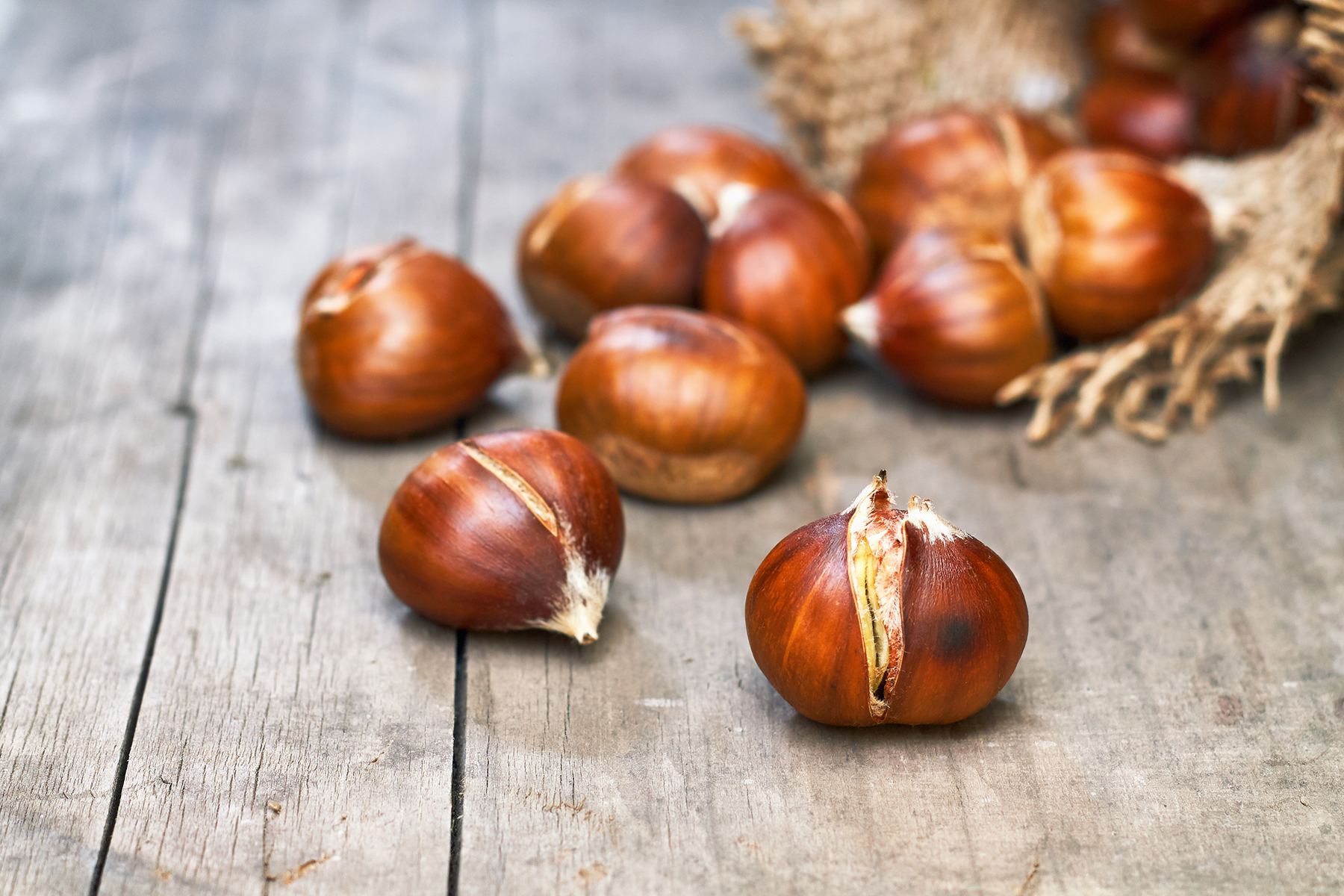The American Chestnut
A Comeback Story

Dominating the Appalachian skyline for thousands of years, the most impressive of trees was the American Chestnut. Towering over 100 feet tall and 14 feet wide, this amazing tree stretched from Georgia to Canada. But it was more than just a tree – it was a way of life. Its strong, rot-resistant wood built everything from homes, paneling, and fences to telegraph poles and tannin for leather production. In fact, much of the stacked wood fencing along the Blue Ridge Parkway is made of entirely chestnut, still standing after more than 80 years. And let’s not forget its nutrient-rich chestnuts, which filled market stalls and kept families fed for generations.
But then, in the blink of an eye, it was gone. In the late 1800s, the Chinese Chestnut was introduced to America, bringing with it new opportunities for food, lumber, and agriculture. A new nut, a new tree, more wood to use – what could go wrong? Unfortunately, these foreign trees that were meant to help brought something else with them – a deadly fungus that would change the American landscape forever. What seemed like a benign fungus quickly became a devastating blight. Once infected, a tree would die within two years. Despite its towering beauty, the American Chestnut simply couldn’t survive. While it took 15 to 20 years for these trees to reach maturity, they were being wiped out in a fraction of that time. It became impossible to ignore – the once-abundant giants were vanishing from the Appalachian forests. Within just a few years, thousands, then millions, then billions of trees succumbed.
By the 1950s, over 85% of all American Chestnut trees were dead. They weren’t just disappearing; livelihoods were as well. Families who once made a living collecting chestnuts were forced to find new ways to survive. Woodworkers, fence makers, chefs, and even power companies struggled in its absence. The American Chestnut wasn’t just a tree – it was a pillar of American industry, culture, and history.
But the story of the American Chestnut isn’t over. Scientists and conservationists have spent decades searching for a solution, and they may have finally found one – the Dunstan Chestnut. This tree is a cross between the American and Chinese Chestnut, carrying 80% of the original tree’s DNA while maintaining the blight resistance of its Chinese counterpart.
And the best part? We might just be witnessing one of the greatest environmental comebacks of all time. Imagine driving down the Blue Ridge Parkway in a few years and seeing American Chestnuts blooming again, their bright white catkin flowers swaying in the spring breeze. The very trees that once defined our forests might finally be coming home.
With Dunstan Chestnuts already taking root in North Carolina, the future is looking bright. In just a few years, we may see these trees returning to farmer’s markets, restaurant menus, and even backyard gardens. Imagine walking through area markets and seeing locally grown chestnuts for sale after being absent for nearly a century. A tree that once defined the Appalachian Mountains is fighting to return, proving that nature, like history, has a way of coming back stronger.
When people think of chestnuts, they usually picture crackling winter fires and holiday markets, but here’s the truth – chestnuts are also a springtime powerhouse. Unlike most nuts, they are low in oil and high in carbohydrates, making them light, energizing, and naturally sweet – a nutritional goldmine packed with fiber, antioxidants, and heart-healthy goodness that is perfect for warm-weather snacks or meals.
Roasted Chestnuts
Nothing says rustic, fireside flavor like charcoal-roasted chestnuts. These smoky, nutty, slightly sweet treats are perfect for spring evenings by the grill. Whether you’re preparing them as a snack, salad topper, or side dish, this simple roasting method brings out their natural richness while keeping them tender inside.
Light your charcoal grill, allowing the coals to heat until glowing red with a steady medium heat. Soak the chestnuts in water for 12-24 hours. This softens the shells and helps them steam as they roast. Using a sharp knife, cut an “X” on the bottom of each to prevent them from bursting during roasting. Push all the charcoal to the center, creating indirect heat around the perimeter. Place the chestnuts in a single layer along the outer edge of the grill so they will cook evenly without burning. Roast for 45 minutes, turning often to ensure an even char and to help the shells open up. Once roasted, let them cool slightly before peeling away the shells.
Toss your roasted chestnuts with flaky sea salt and a drizzle of honey for a simple, satisfying treat. Or chop and sprinkle over a spring greens salad with strawberries or citrus fruits, goat cheese, and balsamic glaze. Top a toasted baguette with chopped chestnuts, ricotta, fresh herbs, and a squeeze of lemon, or serve with soft cheeses, charcuterie, and a crisp white wine for a seasonal appetizer. Layer crushed roasted chestnuts with Greek yogurt, honey, and fresh spring berries for a simple, nutritious breakfast.
One of the best ways to incorporate chestnuts is by pairing them with pork, a classic combination that balances savory richness with a touch of natural sweetness. This chestnut-seared pork loin recipe takes full advantage of roasted chestnuts, blending them with sausage and fresh herbs to create a flavorful crust around the meat. A splash of wine and citrus enhances the dish with light, bright notes, making it perfect for a spring gathering.
Chestnut Seared Pork Loin
– 1 pork loin
– 1 pound sausage
– 1 pound peeled and chopped chestnuts
– 1 onion
– 1 clove garlic
– ¾ cup white wine
– 3 apples, cored and cut into thirds
– Chopped fresh sage
– Juice of 1 lemon
– ¼ stick of butter
Salt and pepper, then pan sear your pork loin. Let cool. While that is cooling, mix your chopped chestnuts with sausage. Wrap pork in sausage mixture, then sear again; add onion, garlic, and apples to the pan and stir often, being sure not to burn the garlic. Deglaze with wine and lemon juice. Place in a 350 degree preheated oven. Cook to an internal temperature of 145 degrees, then remove from the oven. Place pork on a serving platter with apple slices around it. While stirring the jus in the pan, slowly add the butter. Pour over the loin, then slice, serve, and enjoy.
Buck Buchanan
Owner of Lumpy's Ice Cream. Lumpy's uses the finest local ingredients and crafts them into ice cream without any preservatives, additives, or synthetic hormones.

